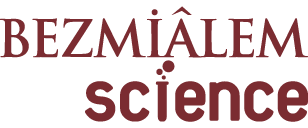ABSTRACT
A novel coronavirus (2019-nCoV), named as severe acute respiratory syndrome-CoV-2 (SARS-CoV-2) later, was first detected at Wuhan, China, in December 2019. COVID-19, the disease caused by SARS-CoV-2, is highly contagious and has mild to severe symptoms ranging from generalized weakness, headache, dizziness, fever, cough, and dyspnea to severe hypoxia with acute respiratory distress syndrome and multiorgan failure. The unclarity of the virus’ pathophysiology and lack of a targeted therapy make the disease very challenging to treat for physicians. Cordyceps sinensis and Cordyceps militaris are entomopathogenic fungi which are used for their anti-inflammatory, immunomodulatory, lung improving, and antiviral functions in Traditional Chinese Medicine. Thus, advanced search for C. sinensis and C. militaris has proven several compounds from these fungi have the functions that they are thought to have. This review aims to discuss whether C. sinensis and C. militaris can be used for COVID-19 treatment in light of previous studies.
Introduction
Coronaviruses (CoVs) are non-segmented positive-sense, single-stranded RNA viruses with an envelope belonging to the family of Coronaviridae (1). They are zoonotic viruses with a broad distribution among humans, other mammals, and birds; causing a wide range of infections which affect respiratory, gastrointestinal, hepatic, and nervous systems (2). Until the novel coronavirus (2019-nCoV) was first detected at Wuhan, China and spread rapidly all over the world (3), six species of the virus were known to cause human disease. While four of them [229E, OC43, NL63, and HKU1) typically cause common cold symptoms, the other two beta-CoVs (SARS-CoV (4) and MERS-CoV (5)] can cause severe acute respiratory syndrome which can be fatal (6). Later, the novel CoV (nCoV) was designated as SARS-CoV-2 due to its similarity to SARS-CoV, and the name CoV disease-19 (COVID-19) was given to the disease caused by SARS-CoV-2 (7). International Committee on Taxonomy of Viruses has announced the official name of the virus as SARS-CoV-2 (8). The typical presentation for COVID-19 is lower respiratory tract infection with fever, dry cough, and dyspnea (9). These respiratory symptoms can range from minimal symptoms to severe hypoxia with ARDS. Thus, the involvement of other organ systems and symptoms as generalized weakness, headache, dizziness, diarrhea, and vomiting are also reported (10). To the date, higher mortality rates in older adults and lower incidence in children have been reported by epidemiological studies (11). Recent studies of CoVs have shown that increased levels of serum proinflammatory cytokines are associated with pulmonary inflammation and damage in Middle East Respiratory Syndrome-CoV (MERS-CoV) (12), SARS-CoV (13), and SARS-CoV-2 (10). Previous reports of increased levels of proinflammatory cytokines such as interleukin (IL)-6, IL-8, IL-10, tumor necrosis factor (TNF)-a, granulocyte-colony stimulating factor, monocyte chemoattractant protein-1 and macrophage inflammatory protein-1a in the plasma with severe disease indicate inflammatory response and cytokine storm plays a crucial role in the disease’s pathophysiology (14). Since no targeted therapy has been discovered to treat COVID-19 yet, it is still challenging for physicians to treat the disease with classic supportive techniques (rest, oxygen saturation, prevention of dehydration, adequate nutrition and control water, electrolyte and acid/base balance) (15) and antivirals (16). Nevertheless, mushrooms can be another treatment option in the light of their usage for previous SARS-CoV infection.
The number of species of mushrooms in the world is estimated to be 140,000, but only 10 % (about 14,000 named species) are known (17). Mushrooms have been consumed by humans for their nutrient and pharmaceutical properties since ancient times (18). Especially in Traditional Chinese medicine, they have been used to support the immune system, to improve lung and kidney functions, to treat chronic bronchitis (19), to control the blood glucose levels, and to protect the liver (20). Previous researches showed that mushrooms contained a vast amount of bioactive compounds such as phenolic, flavonoid, and organic compounds, terpenoids, lectins, proteins, and polysaccharides (21-23), which can be used as immunostimulatory, anti-inflammatory, antiviral, antioxidant, antifungal, and antitumoral in modern medicine (24).
The genus Cordyceps under the division of Ascomycota includes over 500 species of fungi which are entomopathogenic to arthropods (25). C. sinensis and C. militaris are the most known and the most valued species of the genus in Traditional Chinese Medicine (26). They have been used as medicine for their immunological regulation, free radical scavenger, anticancer, antiviral, antifungal, analgesic, antihyperlipidemic, antileukemic, and lung improvement properties in Traditional Chinese Medicine (27,28) (Figure 1). The exhaustive search for COVID-19 treatment has made the drugs of different purposes available for the COVID-19 treatment, indicating drugs derived from mushrooms can also be applicable for the treatment. Thus, many studies have shown that C. sinensis and C. militaris possess antiviral, immunomodulatory, and lung function protective effects, which can also be applicable for COVID-19 treatment. A previous study by Singh et al. (29) showed that C. sinensis increased the tolerance against hypoxia developing in the lung by increasing Nrf2 and HIF1a and decreasing NFkB in vitro. It also increased the anti-inflammatory cytokine TGF-b (29). Moreover, another study by u et al. also showed supportive results with the protective effect of C.sinensis extract on lipopolysaccharide-induced lung injury in mice. They demonstrated that this effect was occurred via reducing the total number of macrophages and neutrophils and expression of TNF-a, IL-6, IL-1b; the binding ability of NF-kB p65 DNA and inhibiting the mRNA expression of COX-2 and iNOS in lung tissue with a dose-dependent manner (30). Their data also revealed that C. sinensis could be used as a potential drug for acute lung injury treatment. Another study by Chen et al. (31) also showed similar results for C. sinensis with reducing bleomycin-induced fibrosis in mice by decreasing the number of inflammatory cells and fibroproliferative foci with a dose-dependent manner. Their data suggested that C. sinensis could be used not only to prevent lung fibrosis but also to treat it. In addition, Wang et al. (32) and Xu et al. (33) studies have shown that C. sinensis inhibits lung fibrosis.
These results were also supported by Kim et al. (34) with showing cordycepin from C. militaris inhibits the NO production in macrophages by downregulating the iNOS, COX-2 expression, and TNF-a gene expression. Additionally, Yang et al. (35) showed that cordycepin inhibited the Th2 dominated inflammation and reduced Th2 associated cytokines, including IL-4, IL-5, and IL-13, with a dose-dependent manner on Ova-induced mouse model of asthma.
In addition to their anti-inflammatory effects, C. sinensis and C. militaris also have an antiviral effect on several viruses. In 1991, Mueller et al. (36) reported that cordycepin had an antiviral effect on HIV-1 in vitro. Therefore, Jiang et al. (37) reported adenosine from C. militaris had an HIV-1 protease inhibitory effect. Lee et al. (38) demonstrated the antiviral effect of C. militaris on DBA/2 mice infected with H1N1. They showed a significant survival improvement with C. militaris treatment. They also demonstrated a significant decrease of TNF-a on treatment group, suggesting C. militaris has an immune-enhancing in healthy mice while the immune-inhibitory effect in H1N1 infected mice (38). Another study for C. militaris’ anti-influenza effect was performed by Ohta et al. (39). They demonstrated a significant decrease of virus titers in both lung tissue and bronchoalveolar lavage fluid of the mice treated with an acidic polysaccharide (APS) isolated from C. militaris intranasally. Since they did not observe any direct antiviral effect of the APS in vitro, they thought the anti-influenza effect of the APS was occurred by its immunomodulatory effects (39). In addition to anti-HIV and anti-influenza activities, C .militaris also has the anti-HCV effect, which was previously described by Ueda et al. (40). They also reported that cordycepin was probably the responsible molecule for this activity by inhibiting RNA-dependent RNA-polymerase (NS5B) of HCV (40).
C. sinensis and C. militaris can modulate the immune response in addition to their anti-inflammatory, antiviral, antioxidant, and antifibrotic properties mentioned in the above literature; It may be suitable for the pathologies that occur in COVID-19.
Discussion
SARS-CoV-2, which is previously known as nCoV, has spread throughout the world rapidly after it was first detected at Wuhan, China, and declared as a pandemic by WHO. Although pathophysiology of the virus has not been clarified completely yet, it is known that the cytokine storm plays a crucial role, and lungs are the most affected organs with severe inflammation. Thus, there are no data available about the disease’s long term effects on the lungs and other organs. Permanent fibrosis may be seen in the patients overcoming the disease. It seems like drugs targeting the excessive immune response and the virus itself hold the potential to be used for COVID-19 treatment. C. sinensis and C. militaris are traditionally used mushrooms to improve lung functions and regulate the immune system in China. Thus, according to previous researches mentioned above, C. sinensis and C. militaris can be effective agents for the prevention and treatment of COVID-19 by immunomodulating, reducing the proinflammatory cytokines, preventing lung fibrosis, improving tolerance to hypoxemia and inhibiting the viral enzymes.
Moreover, they can also be used either to maintain the lung functions after overcoming the disease. This paper demonstrated that C. sinensis and C. militaris might be used for the treatment of the COVID-19 for reducing inflammation and fibrosis, increasing immune response and antiviral effect. It may be a better option to use anciently known and well-studied agents rather than discovering new ones to find a rapid treatment for COVID-19 in these pandemic times. Further investigations of the mechanisms involved are needed.
Limitation
While C. militaris can be cultured in the laboratory conditions, C. sinensis can only grow in the nature, and it may be endangered due to overuse. Therefore, many types of research mainly focused on C. militaris due to either difficulty to find C. sinensis samples and to protect the species from the human overuse.



